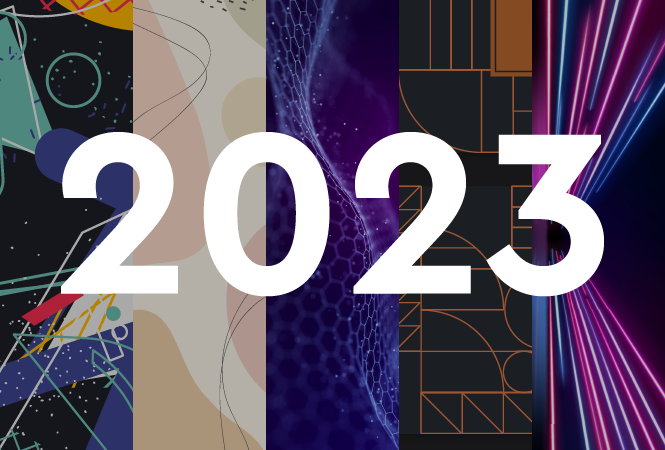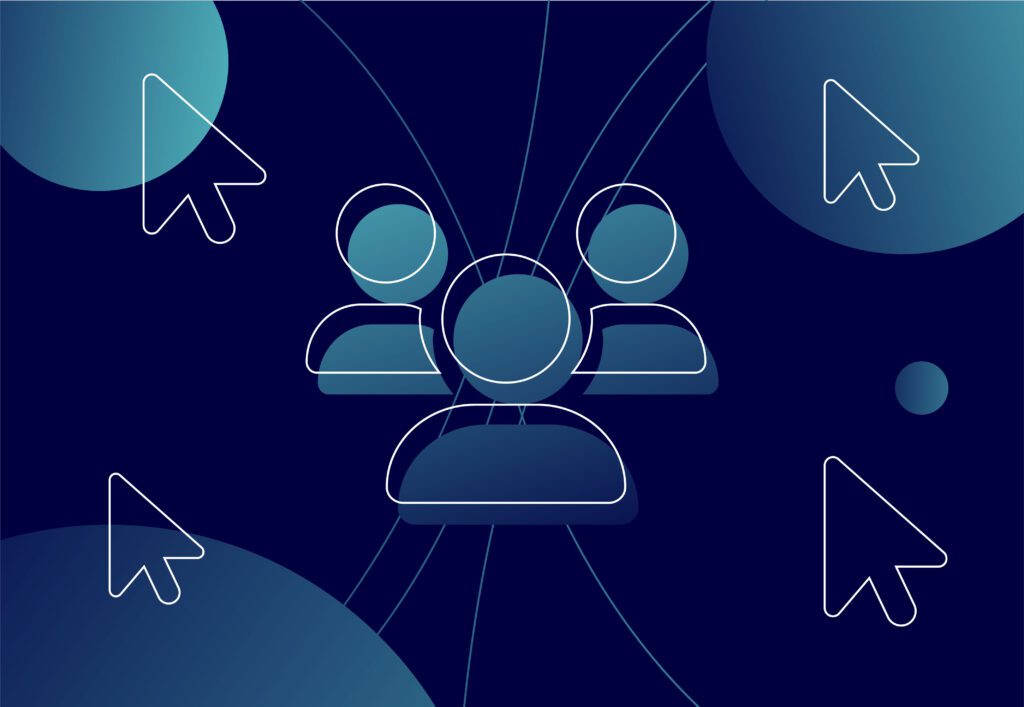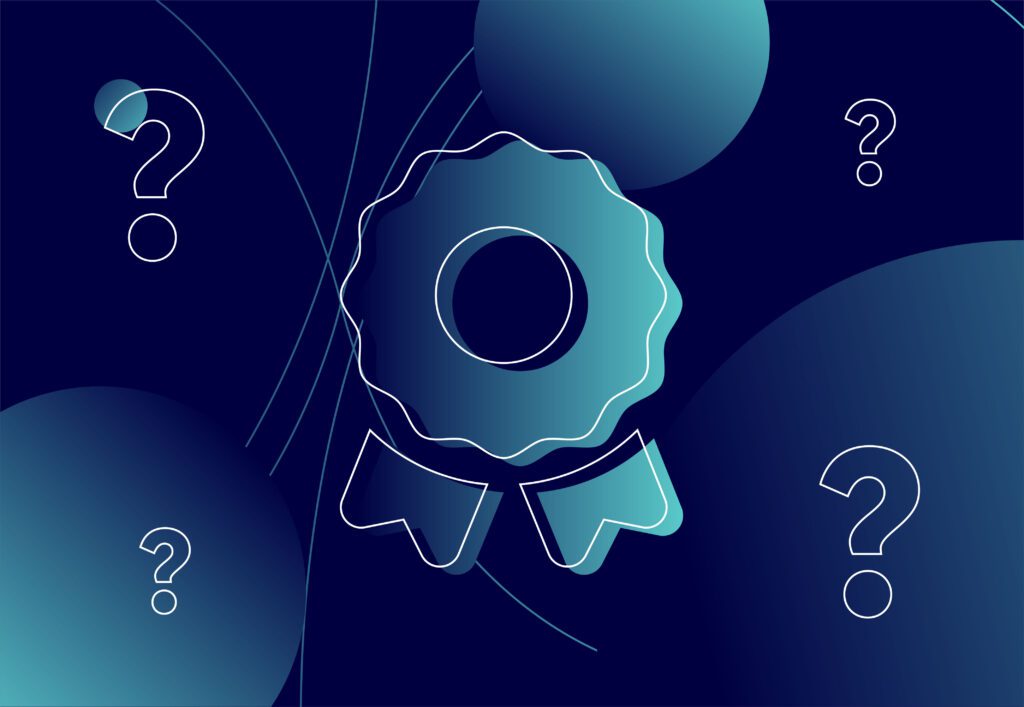
5 Design Styles That Are Going to Be Big in 2023

2022 has brought a range of new styles and approaches to design, some drawing from the past and building on them and some radical and new. 2023 will undoubtedly bring a new plate of design styles to the table. Here are my top 5 design styles that I predict will play a big part of the year to come.

1. Maximalism
With such an emphasis on minimalism recently (and some would say the borification of branding), I think 2023 will bring the long awaited maximalist period. Maximalist design is a trend that embraces excess and indulgence, with the goal of creating visually striking and impactful designs. With a cost of living crisis happening globally I believe excitement, with a level of decadence, will be brought into people’s homes and lives with the use of maximalist design.
One key element of maximalist design is the use of bold and vibrant colours, which can be used to create a sense of energy and excitement. These colours may be used in a monochromatic scheme, with a single hue used in a range of shades, or in a more eclectic mix of colours that are chosen for their visual impact which can sometimes create a deliberate clash.
.
The main challenge of maximalist design is finding the right balance between excess and coherence. While maximalist designs are meant to be bold and eye-catching, they can also be overwhelming if not carefully curated and balanced. As a designer working in this style, it’s important to carefully consider how to use elements such as colour, imagery and type to create harmony and cohesion in the design.
Overall, maximalist design is an exciting and bold approach to design that can be used to create visually striking and memorable designs. The ethos of Maximalism is “More is more”, opposed to the “Less is more” approach of minimalism. Whether you are a designer working in this style or simply looking to incorporate maximalist elements into your work, it’s important to consider the balance between excess and coherence in order to create designs that are impactful and effective.

2. Organic and Biophillic Design
With a global shift in working conditions over the past few years, even more so in 2022 the purpose of organic and biophillic design has never been more important. With the benefits of the outdoors being so important to mental health and wellbeing, nature can be easily brought into the household with the use of organic and biophillic design.
Organic and biophillic design is a trend that incorporates elements of nature into design in order to create a sense of connection and harmony with the natural world. This approach can be seen in a variety of design contexts, including architecture, interior design, and product design.
One key element of organic and biophilic design is the use of natural materials, such as wood, stone, and plants. These materials can be used in a variety of ways, such as in the construction of buildings or as decorative elements in interiors. Natural materials can help to create a sense of warmth, comfort, and connection to the natural world, as well as provide functional benefits such as insulation and acoustical properties.
In addition to the use of natural materials, organic and biophilic design often incorporates elements that mimic natural forms, such as curved lines and flowing shapes. These elements can help to create a sense of movement and dynamism, as well as a sense of connection to the natural world.
A major benefit of organic and biophilic design is the positive impact it can have on human health and well-being. Studies have shown that exposure to nature and natural elements can have a range of benefits, including improved mental health, stress reduction, and increased productivity. As a designer working in this style, it’s important to consider these potential benefits and how they can be incorporated into your work.
Overall, organic and biophilic design is a trend that is driven by a desire for connection to the natural world and a recognition of the positive impact that nature can have on human health and well-being. Whether you are a designer working in this style or simply looking to incorporate organic and biophilic elements into your work, it’s important to consider how these elements can be used to create a sense of harmony and connection with the natural world.

3. AI Design
Artificial intelligence (AI) has the potential to revolutionise the field of design by enabling the creation of artwork and designs that would be impossible or impractical to create manually. As AI becomes more prominent it will be harder to distinguish from a human-created piece. Thai is an excellent gateway for new designers where ideas and concepts can be quickly created with a few sentences.
One key application of AI in design is the creation of original artwork. AI algorithms can analyse patterns, colours, and other visual elements in existing artwork and use this information to generate new artwork that is based on the style and aesthetic of the original. This process can be used to create a wide range of artwork, from abstract designs to more realistic images and illustrations.
In addition to creating original artwork, AI can also be used to automate or augment various design tasks. For example, AI algorithms can be used to generate variations on an existing design, such as creating different colour palettes or layout options. AI can also be used to analyse user behaviour and generate design recommendations based on this data.
One key challenge of AI-generated artwork and design is the potential for the loss of the human touch and the unique perspective that a human designer brings to their work. While AI can generate a wide range of designs and artwork, it is still up to human designers to curate and select the best options and incorporate their own creativity and perspective into the final product.
Overall, AI has the potential to revolutionise the field of design by enabling the creation of original artwork and automating or augmenting various design tasks. However, it is important for designers to carefully consider the role of AI in their work and to ensure that the human touch and perspective is not lost in the process.

4. Art Deco Revival
Art deco is a design style that originated in the 1920s and 1930s and has experienced a resurgence in popularity in recent years. Art deco is characterised by a combination of traditional and modern elements, with a focus on luxury, glamour, and sophistication.
One key element of art deco style is the use of bold geometric shapes, such as circles, triangles, and zigzags. These shapes are often used in a symmetrical or repetitive manner, creating a sense of order and structure. Art deco designs also often feature smooth, sleek lines and curves, as well as decorative flourishes and ornamentation.
In terms of colour, art deco designs tend to be vibrant and bold, with a focus on bright and saturated hues. These colours may be used in a monochromatic scheme, with a single hue used in a range of shades, or in a more eclectic mix of colours.
Art deco is a versatile design style that can be applied to a wide range of contexts, from architecture and interior design to fashion and graphic design. As a designer, you can incorporate art deco elements into your work by using bold geometric shapes, smooth lines and curves, and vibrant colours to create a sense of luxury and sophistication.
Overall, art deco is a stylish and timeless design style that is experiencing a resurgence in popularity. Whether you are a designer looking to incorporate art deco elements into your work or simply looking to incorporate this style into your personal aesthetic, it’s important to consider how these elements can be used to create a sense of glamour and sophistication.

5. Futurism
Futurism is a design style that is characterised by a focus on the future and the use of futuristic and technology-inspired elements. This style is often associated with science fiction and is known for its bold, futuristic aesthetic. You only need to drive on the main road at night to see the futuristic, bar tail lights of the cars in front.
Car design has always held prominence in design trends and styles. We recently did some work for Magnitude, showcasing the best-looking cars of each decade as voted by their customers. You can easily tell the period a car was designed in from the colours of the paint and the lines of the bodywork.
A substantial element of futurism is the use of sleek, modern lines and shapes, often inspired by technology and machinery. These shapes may be angular and geometric, or they may be more organic and flowing. Futurism is also known for its use of vibrant, futuristic colours, such as neon shades and metallic hues.
In terms of materials, futurism often incorporates high-tech materials, such as stainless steel, glass, and plastic, as well as more traditional materials that have been given a futuristic twist, such as wood or stone that has been treated or manipulated in a futuristic way.
Overall, futurism is a bold and futuristic design style that is perfect for those who are interested in science fiction and the future. Whether you are a designer looking to incorporate futurism into your work or simply looking to incorporate this style into your personal aesthetic, it’s important to consider how these elements can be used to create a sense of the future and technology.
The future is hard to predict and I strongly believe design is organic and can evolve and morph quickly. I’m excited for 2023 and looking forward to all the new design that will come from the next 12 months. If you are interested in how Embryo can help with design in 2023, get in touch.




